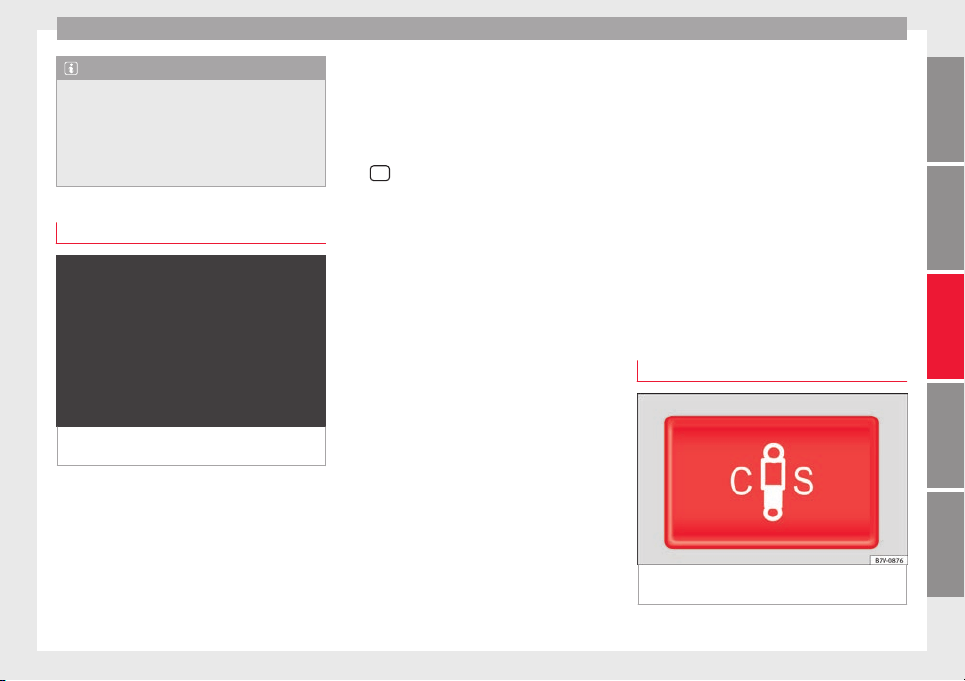Loading ...
Loading ...
Loading ...

Driver assistance systems
Note
●
The tirednes
s detection function has only
been designed for driving on motorways and
wide roads.
●
If there is a fault in the system, refer to a
Specialised workshop to have the system in-
spected.
Function and operation
Fig. 227 On the instrument panel display:
tir
edne
s
s detection symbol
The tiredness detection function registers the
beh
av
iour of
the driver at the wheel at the
beginning of a journey and, using this, evalu-
ates the tiredness. This is continually com-
pared with the current behaviour at the
wheel. If the system detects that the driver is
tired, an audible warning using a “gong” is
given and a symbol and complementary mes-
sage on the instrument panel display are
shown ››› Fig. 227. The on-screen message
on the dash panel is displayed for 5 seconds
and, where required, repeated again. The
system stores the last message displayed.
The message that appears on the instrument
panel display can be switched off by pressing
the
OK
button on the multifunction steering
wheel
or on the w
indo
w wiper lever
›››
page 29. Using the multifunction dis-
play ›››
page 29 the message on the in-
strument panel display can be shown.
Conditions of operation
Behaviour at the wheel is only evaluated at
speeds of above 65 km/h (40 mph).
Switching on and off
The system can be switched on or off in the
Assistants menu. If an assistance system
is switched on, this is indicated with a
“mark”.
Limited operation
The tiredness detection function is subject to
certain limitations. Therefore it is possible
that in some driving situations behaviour at
the wheel cannot be correctly interpreted.
E.g. in the following situations:
●
at speeds lower than 65 km/h (40 mph),
●
in sections with corners,
●
on roads in poor condition,
●
in the event of adverse weather conditions,
●
when a sporty driving style is employed,
●
in the event of a major distraction for the
driver,
The tiredness detection function switches off
when the ignition is switched off or when the
driver unbuckles their seat belt and opens
the door. If driving for a long time under 65
km/h (40 mph), the system ceases to assess
tiredness automatically. If driving speed is
then increased, the behaviour at the wheel
will again be evaluated.
Dynamic Chassis control (DCC)*
Operation and control
Fig. 228 In the centre console: button for set-
tin
g the dy
n
amic chassis control.
»
233
Technical dataAdviceOperationEmergenciesSafety
Loading ...
Loading ...
Loading ...